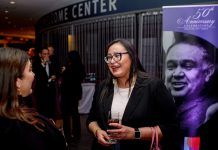An eighth grader saw an ad for a Verizon app contest. She had difficulties logging onto her online textbooks from her home computer, with no trouble on her handheld device. She told her tech savvy friends about it. They met before and after school having fun designing the ideal tutoring app born of necessity to make their studying and counseling issues streamlined and more substantial.
An eighth grader saw an ad for a Verizon app contest. She had difficulties logging onto her online textbooks from her home computer, with no trouble on her handheld device. She told her tech savvy friends about it. They met before and after school having fun designing the ideal tutoring app born of necessity to make their studying and counseling issues streamlined and more substantial.
Rae’Bel Neary, Alessandra Gulino, Anna Johnson, Mikey Palmantier and Noah Cabral, all eighth graders, collectively generated and submitted to the Verizon Innovative App Challenge a proposal for an app that is both academic and social. Their Digital Learning Tutor app is supplemental to their academic curriculum, a resource for student endeavors, and also a sounding board for students and parents.
Digital Learning Tutor propelled these five Hillsdale Middle School students all the way from Best in State, to a western regional victory and as finalists against two other middle schools in Colorado and Washington in the Verizon contest on Feb. 26.
The regional victory earned their school $5,000 for STEM classes (science, technology, engineering and math) plus a free app designing class for the five students at ITT Tech.
If they win the National Championship, they get $15,000 to produce Digital Learning Tutor, a trip to Washington D.C. for two (Hillsdale Middle would attempt to raise funds for the additional three to make the trip), and a Samsung Galaxy Tablet for each winning student. Any additional funds will go directly back to Hillsdale Middle School.
The success of the five students has made them the pride of their school community, though it was somewhat surprising to them. When Neary discovered the competition, it had already begun.
The group started two months behind the contest’s start date, but hit the challenge head on with much of their free time because they knew they had something good and useful to offer.
“I really wanted to make a tutoring app but as we talked about it, we decided to add more, like student help, parent help, thinking of the future links and local modifications,” Neary said.
Their app offers student in help in six different areas, each with its own categorical header on a pull down menu. Subject Help is designed to offer online textbooks plus lectures. Student Help would let students do things like report problems like bullying, talk with other students in a social media type format, get feedback and offer a Q & A option. This category was Gulino’s idea.
“If students have problems and they’re too stressed, they’re not going be paying attention and focused on school work, so you can go online and talk to an advisor, counselor, and communicate and blow off steam,” Gulino said. “You can talk and ask for advice on what to do if you need help.”
The Parent Help category would require a password and allow parents to do similar things as their kids in the student help option, report problems in school, access Q & A, but also be a valuable communication tool.
“A parent can ask questions about their child, like, ‘I don’t know if she’s eating or sleeping enough,’ it’s help with parents and students so they both feel like they’re communicating,” Neary said.
The Thinking of the Future category would assist students in career paths, college selections, and STEM subjects. Links would hook kids up to existing, free tutoring sites like Khan Academy and My Vocabulary. The sixth category, Local Modification, would provide teacher e-mail addresses and other relevant links.
Digital Learning Tutor is more than an online study guide or list of college application due dates. Its five inventors imagined all impediments to pre-collegiate academic success—scholastic, social—and designed a helpful tool that is practical, accessible and even anonymous.
Their success is surprising only to them. But it has started to sink in and continues to motivate them.
“I feel like this will always be a wonderful accomplishment that we can have all the way throughout high school, I’m happy we even made it this far. I’m proud,” Neary said.
Cabral said it is a great accomplishment to help their community.
“I’m doing it with my friends which makes it so much more fun,” said Cabral.
Johnson, who took youth entrepreneurship classes at Cuyamaca College, said she and her father feel it’s impressive just to have gotten this far.
Next time you see a teenager absorbed with their handheld device, or cannot help but notice a tween constantly engaged in media, remember the “Hillsdale Five.” They saw a need and with technology and zero self-doubt, invented a way to fill it.
They won, and won again with the spark of ingenuity that keeps everything connected.














